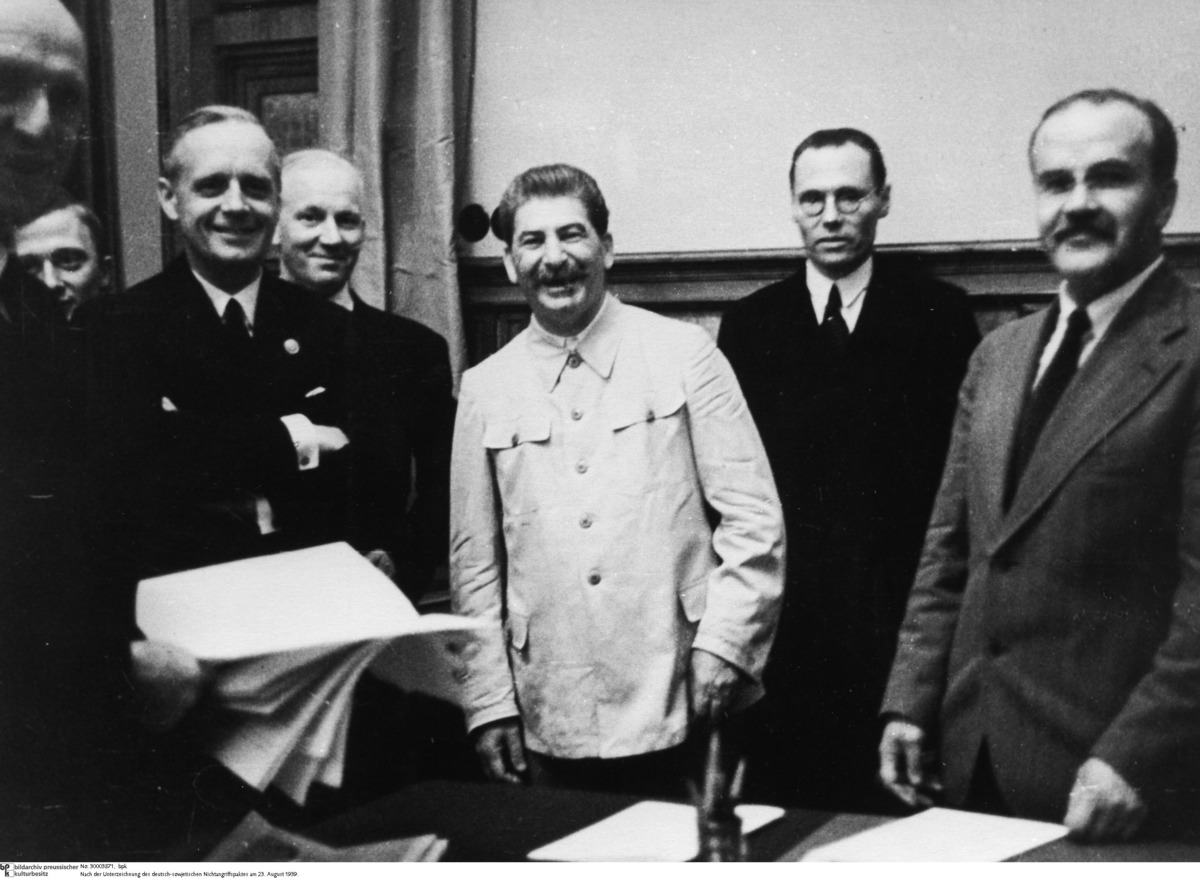Abstract
In 1939, German war preparations were advancing rapidly on all
fronts, including the diplomatic one. Over the course of the year, the
German Reich formed a multitude of alliances to optimize the country’s
economic and military-strategic position before the start of war. These
alliances included non-aggression pacts with Latvia, Estonia, and
Denmark, as well as raw materials agreements with Sweden, Norway, and
Romania. The most important diplomatic success, however, was the signing
of the German-Soviet Non-Aggression Treaty on August 23, 1939. Hitler
knew that the Soviet Union, alone or together with Great Britain and
France, could endanger his plans for a war against Poland. For his part,
Stalin wanted to ensure that German expansion would be limited to Polish
territory for the time being. After weeks of negotiations, Foreign
Minister Joachim von Ribbentrop and Soviet Foreign Minister Soviet
Foreign Minister Viacheslav Molotov reached an agreement that astonished
the international community. The ideological archenemies committed
themselves for the next ten years to neutrality in the event of war, to
the peaceful resolution of conflicts, and to the broadening of their
trade relationship. In a secret supplementary protocol, Germany and the
Soviet Union also agreed to divide up the territory of Poland and
Eastern Europe between themselves. The photo shows, from left to right,
Ribbentrop, Stalin, and Molotov at the signing of the Non-Aggression
Treaty.
